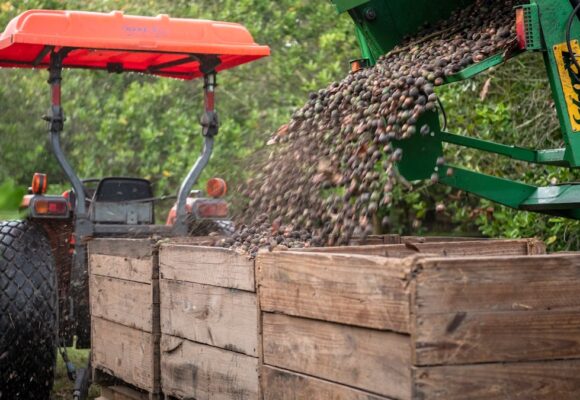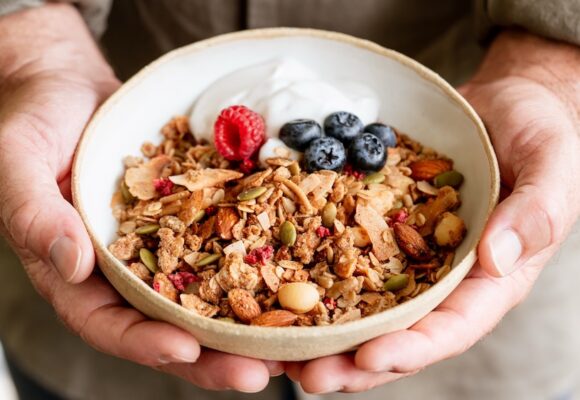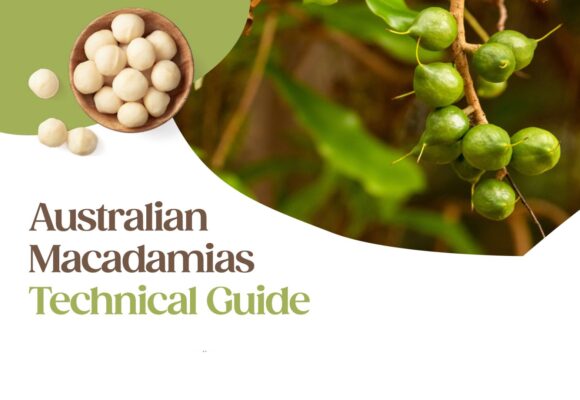
Nut allergies. How common are they? How severe are they? And what’s the current advice around how best to manage them?
These were some of the big questions explored at the 2017 Australian Nut Conference last month in a presentation by paediatric food allergy experts Professor Katie Allen and Vicki McWilliam from the Melbourne Royal Children’s Hospital.
The rise of childhood food allergies
Childhood food allergies have risen globally over the past 50 years however it is a particularly large problem in Australia, the country often referred to in research circles as the ‘food allergy capital of the world’.
Australian researchers are leading a worldwide shift in the way food allergies are managed, in the hope of stemming the rise in the number of children affected.
Professor Allen said it is estimated that in Australia up to 10% of babies aged up to 12 months have a confirmed food allergy, dropping to around 5% by early adolescence. Tree nut allergy represents around 2% of this, with cashew nut allergy the most common.
In terms of food allergy severity in Australia, there has been a rise of more than 50% in anaphylaxis admissions to hospital since 2005, with anaphylaxis fatalities also increasing. While hospital admissions are most common among younger children up to four years, the greatest increase has occurred among children aged five to 14 years. Peanuts and tree nuts are the most common foods to trigger an anaphylaxis hospital admission.*
Why nut-free schools are not the answer
Blanket bans on nuts and products containing nuts were common practice in Australia for many years. However this approach is not supported by the Australasian Society of Clinical Immunology and Allergy (ASCIA).
As Professor Allen explained, while the nut free approach was well intentioned, it is almost impossible to operate a truly nut free school, with the practicalities of policing every item of food brought onto school grounds beyond the resources of most Australian schools.
Furthermore, for an allergic reaction to be triggered in a nut allergy sufferer, the student would need to actually eat food that contains nuts; simply being in the vicinity of classmates who are eating a nut product does not pose the same risk.
Instead, Professor Allen says the emphasis is now on action plans and training teachers and staff to recognise and treat anaphylaxis, and on educating students not to share food with others. Banning nuts from school cooking classes is also recommended.
Also noted is that these recommendations do not apply to early childhood facilities, where nut bans are still the most appropriate approach.
Major changes to allergy management
Avoidance of potential allergens has long been at the heart of allergy management recommendations globally. However the continued rise of childhood food allergies signalled to the medical and scientific communities that something needed to change.
This has led to an overhaul of allergy management recommendations in Australia, with early exposure to, rather than avoidance of, potential food allergens thought to be an effective allergy prevention tool – even for children at high risk of allergies. The new prevention guidelines include**:
- When your baby is ready, at around 6 months but not before 4 months, start to introduce a variety of solid foods, starting with iron rich foods, while continuing breastfeeding
- All infants should be given allergenic solid foods including peanut butter, tree nut butters, cooked egg and dairy and wheat products in the first year of life. This includes infants at high risk of allergy.
- Hydrolysed (partially and extensively) infant formula is not recommended for prevention of allergic disease
For those children with an established nut allergy, it is now recommended that other tolerated nuts be incorporated into the diet, rather than adopting a ‘blanket avoidance’ approach.
For manufacturers, this could see a rise in consumers demanding nut in shell and product from single origin nut producers, as well as specific tree nut labelling on pack.
Prevention factors: from dogs to vitamin D
In addition to early exposure to potential food allergens, Professor Allen and her team are investigating other factors that may help to prevent food allergies from developing.
Their work to date has identified a number of important factors:
- Owning a dog and having more siblings appears to be protective
- Maintaining vitamin D in the normal range may be critical in the first year of life
- Prevention of eczema by maintaining the skin barrier function may be important. Moisturisation and avoidance of soap may play a role here.
Continuing to solve the allergy puzzle
The work of Professor Allen, Vicki McWilliam and others is crucial to understanding the food allergy puzzle. It is hoped the new guidelines make a significant difference to the number of families affected by the stress of managing paediatric food allergies, and that eventually, allergy therapies will emerge from ongoing research.
For more information on tree nut allergies, please contact Lisa Yates, Program Manager and Dietitian at Nuts For Life.
*Mullins et al. Increase in anaphylaxis fatalities in Australia, 1997-2013, Clinical and Exp Allergy, 2016
** These guidelines are based on current published evidence, including information published after 2010. The revised recommendations listed above are based on a consensus agreement by participants in the Infant Feeding Summit hosted by the Centre for Food & Allergy Research (CFAR) in May 2016


